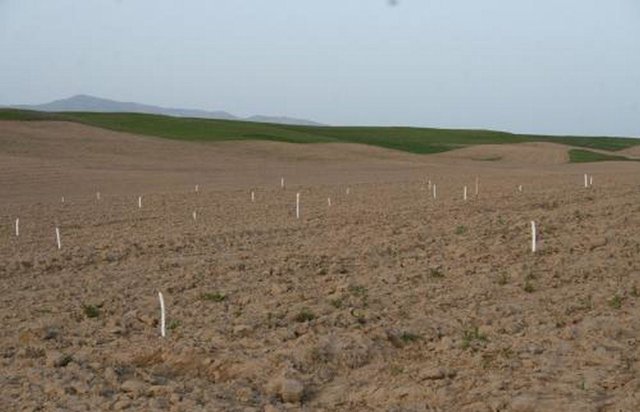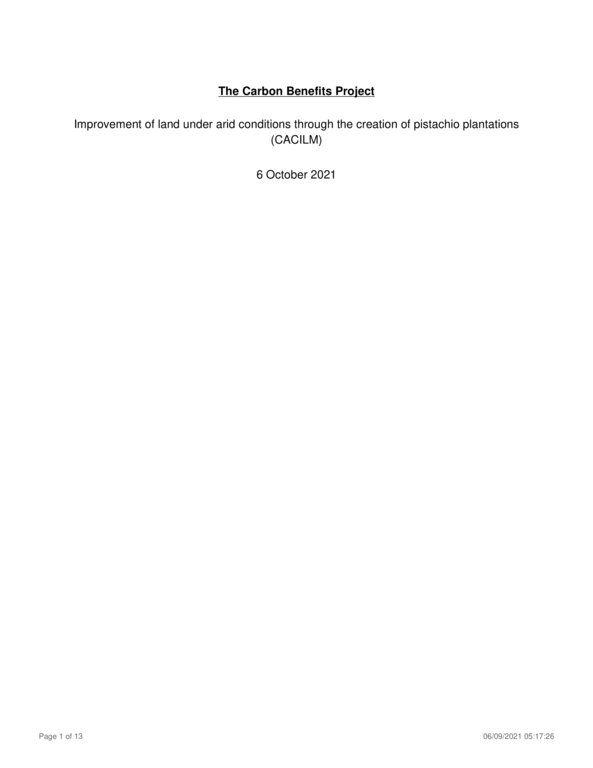Proyecto de Beneficios del Carbono (CBP)
Módulo de resumen del Proyecto de Beneficios del Carbono (PBC)
Tecnología: Improvement of land under arid conditions through the creation of pistachio plantations (CACILM) (Central Asian Countries Initiative for Land Resource Management (CACILM))- Creación:
- Actualización:
- Compilador: Eleanor Milne
- Editor: –
- Revisor: Tatenda Lemann
cbp_6145
Completado: 100%
1. Información general
2. Carbon Benefits Project (CBP) Assessment
Vínculos y módulos
Colapsar todosVínculos

Улучшение земель в аридных условиях через создание фисташковых … [Uzbekistán]
Создание плантаций фисташки на пологих склонах для повышения производительных функций земли, предотвращения деградации и восстановления ландшафтов предгорной аридной зоны
- Compilador: Rustam Ibragimov
Módulos
No se hallaron módulos


